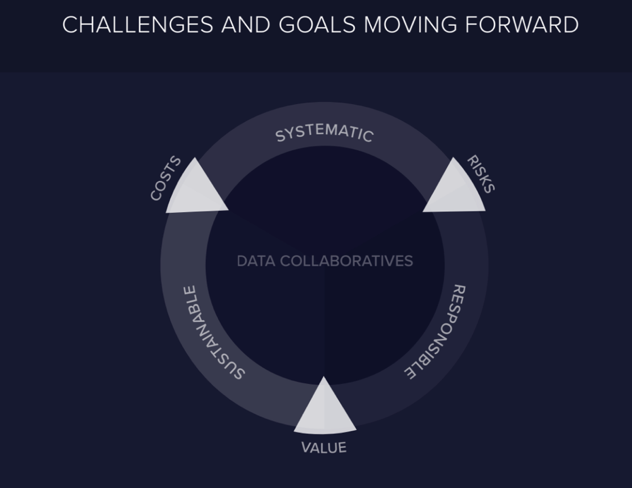Blog Post by Stefaan G. Verhulst: “…The value of data collaboratives stems from the fact that the supply of and demand for data are generally widely dispersed — spread across government, the private sector, and civil society — and often poorly matched. This failure (a form of “market failure”) results in tremendous inefficiencies and lost potential. Much data that is released is never used. And much data that is actually needed is never made accessible to those who could productively put it to use.
Data collaboratives, when designed responsibly, are the key to addressing this shortcoming. They draw together otherwise siloed data and a dispersed range of expertise, helping match supply and demand, and ensuring that the correct institutions and individuals are using and analyzing data in ways that maximize the possibility of new, innovative social solutions.
Roadmap for Data Collaboratives
Despite their clear potential, the evidence base for data collaboratives is thin. There’s an absence of a systemic, structured framework that can be replicated across projects and geographies, and there’s a lack of clear understanding about what works, what doesn’t, and how best to maximize the potential of data collaboratives.
At the GovLab, we’ve been working to address these shortcomings. For emerging economies considering the use of data collaboratives, whether in pursuit of Artificial Intelligence or other solutions, we present six steps that can be considered in order to create data collaborative that are more systematic, sustainable, and responsible.

- Increase Evidence and Awareness…
- Increase Readiness and Capacity…
- Address Data Supply and Demand Inefficiencies and Uncertainties…
- Establish a New “Data Stewards” Function…
- Develop and strengthen policies and governance practices for data collaboration…
- Strengthen the Ecosystem… (More)” (re- posted from the Qatar Center for Artificial Intelligence Blog)